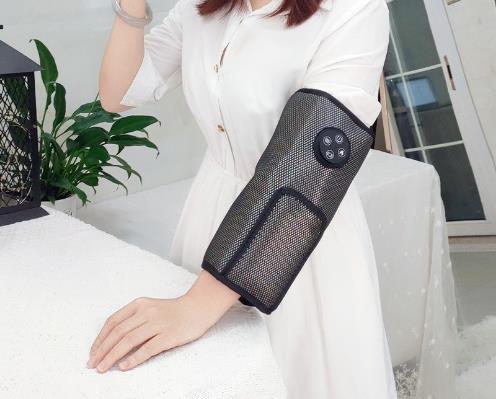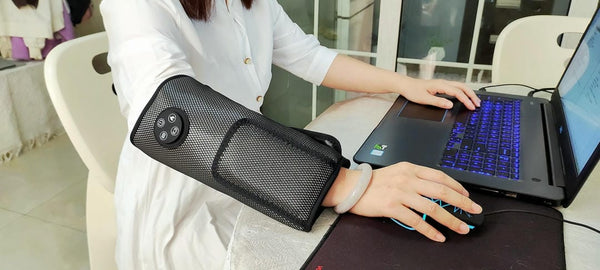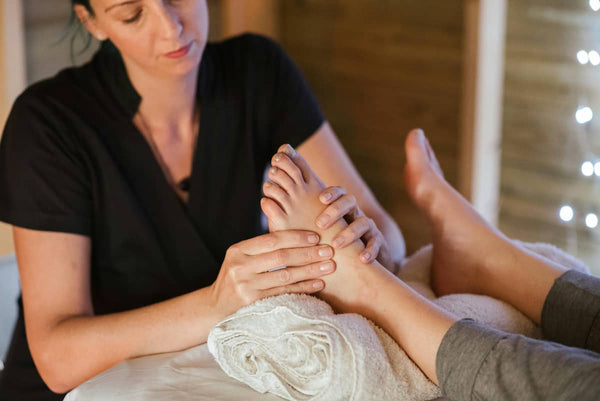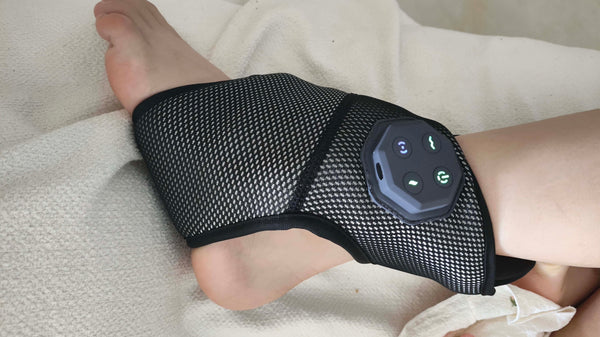 Ouch! That twinge in your hand again? If you're nodding along, you're certainly not alone. As a rehabilitation physiotherapist, I've seen countless individuals, particularly middle-aged and elderly fitness enthusiasts, walk into my clinic with hands that tell a story of aches and stiffness. It's estimated that nearly 1 in 4 adults suffer from arthritis, and the hands are a prime target. But here's the good news: you don't have to just "live with it." Proactive management, including techniques like arthritis massage, can make a world of difference in reclaiming your hand function and overall comfort. We're here to explore solutions, because your hands are essential for, well, pretty much everything!
Ouch! That twinge in your hand again? If you're nodding along, you're certainly not alone. As a rehabilitation physiotherapist, I've seen countless individuals, particularly middle-aged and elderly fitness enthusiasts, walk into my clinic with hands that tell a story of aches and stiffness. It's estimated that nearly 1 in 4 adults suffer from arthritis, and the hands are a prime target. But here's the good news: you don't have to just "live with it." Proactive management, including techniques like arthritis massage, can make a world of difference in reclaiming your hand function and overall comfort. We're here to explore solutions, because your hands are essential for, well, pretty much everything!
This guide will delve into understanding your hand pain and, more importantly, what you can do about it. We'll look at various approaches, from simple self-care to medical interventions, all aimed at getting you back to your favorite activities, whether it's gardening, knitting, or just opening that stubborn pickle jar without wincing. Remember, seeking relief through methods like arthritis massage isn't just about pampering; it's about maintaining your quality of life.
Exploring Causes Beyond Just Massage for Carpal Tunnel
So, what's really going on when your hands start to protest? It's rarely just "old age," you know! The intricate structure of our hands, with numerous bones, joints, ligaments, and tendons, makes them susceptible to various conditions. One of the most common culprits I see is osteoarthritis, the "wear and tear" type of arthritis, where the protective cartilage on the ends of your bones wears down over time. Then there's rheumatoid arthritis, an autoimmune condition where the body mistakenly attacks its own joints, often starting in the hands and feet. Both can significantly benefit from gentle arthritis massage to ease stiffness and improve circulation.
Beyond arthritis, conditions like carpal tunnel syndrome are incredibly prevalent. This occurs when the median nerve, which runs from your forearm into your palm, becomes pressed or squeezed at the wrist. Sufferers often report numbness, tingling, and pain, especially in the thumb, index, and middle fingers. While massage for carpal tunnel can be beneficial, it's crucial to understand the underlying cause. Repetitive strain injuries, from activities like typing or using tools, and tendonitis (inflammation of a tendon) are also frequent flyers in the hand pain clinic. Understanding these mechanisms is the first step towards effective management, including targeted arthritis massage approaches.
It's also worth noting that sometimes hand pain can be referred from other areas, like the neck or shoulder. A thorough assessment by a healthcare professional is key to pinpointing the exact source. For instance, if you suspect carpal tunnel, simply getting a massage for carpal tunnel might provide temporary relief, but addressing posture or ergonomic setups could be equally vital. Knowing the "why" helps us tailor the "what to do next," ensuring that treatments like arthritis massage are applied effectively.
What Are My Options for Hand Pain Relief, Including Hand Compression Gloves and More?
Alright, let's talk solutions! The wonderful thing is that there isn't a one-size-fits-all answer, which means there are various avenues to explore. Think of it like a toolkit for your hands; different tools for different jobs. As a physiotherapist, my goal is to empower you with knowledge about these tools so you can make informed choices. And yes, we'll definitely talk about how things like arthritis massage and even hand compression gloves fit into this picture.
Tool-Assisted Massage and Self-Care Goodness
Principle Overview: This category includes a variety of methods you can often do at home. Think electric hand massagers, massage balls, or even simple rollers. The idea is to gently increase blood flow, reduce muscle tension, and provide soothing relief to those aching joints and tissues. This is where a good arthritis massage technique, perhaps aided by a tool, can be incredibly comforting.
Target Audience: This approach is fantastic for individuals with mild to moderate chronic hand pain, particularly from conditions like osteoarthritis. If you're looking for convenient, daily relief and a way to manage symptoms without frequent appointments, this is for you. Many of my patients with early-stage arthritis find these tools invaluable for maintaining hand mobility and reducing morning stiffness. Are you someone who needs that bit of extra help to get going? This could be it.
Effectiveness: Tool-assisted arthritis massage and self-massage can be quite effective for symptom management and relaxation. They won't cure underlying conditions like severe rheumatoid arthritis, but they can significantly improve your day-to-day comfort and function. Consistency is key here; a few minutes each day can yield better results than sporadic, longer sessions. Some tools even incorporate heat, which further helps to soothe achy joints.
When Your Hands Wave a Bigger Red Flag - Medical Interventions
Principle Overview: Sometimes, self-care isn't enough, or your pain takes a turn for the worse. This is where your doctor or a specialist steps in. Medical interventions might include things like cortisone injections directly into an inflamed joint to rapidly reduce pain and swelling, or prescription medications to manage conditions like rheumatoid arthritis. Referral to an occupational therapist (OT) is also common; OTs are wizards at helping you adapt tasks and find tools (like specialized ergonomic grips or carpal tunnel braces) to make daily life easier.
Target Audience: This route is generally for those with severe or persistent pain, acute flare-ups of conditions like gout or rheumatoid arthritis, or when conservative methods like basic arthritis massage haven't provided sufficient relief. If your hand pain is significantly impacting your ability to perform daily tasks, or if you experience sudden, intense pain, redness, and swelling, it's definitely time to seek medical advice. Ignoring these signs is a no-go!
Effectiveness: Medical interventions can be highly effective, especially for acute issues. A cortisone shot can feel like a miracle for a badly inflamed joint, though its effects are often temporary and shots can't be given too frequently. Occupational therapy provides long-term strategies and adaptations that can profoundly improve quality of life, particularly for those with chronic conditions. These interventions often work best when combined with other approaches, such as an ongoing arthritis massage routine once the acute phase has passed.
The Art of Conversion – Using Your Body Smarter
Principle Overview: This is a bit of a pro tip, often taught to massage therapists themselves to save their own hands, but the principle is golden for everyone! It's about reducing the direct strain on your hands by using other parts of your body or by modifying how you perform tasks. Think using your forearm or elbow for leverage when appropriate (maybe not for typing!), or using your whole body to open a jar instead of just your wrist and fingers.
Target Audience: This is for absolutely everyone, but especially for individuals whose hand pain is exacerbated by specific activities or repetitive motions. If you find your hands ache after a long day of computer work, crafting, or even certain fitness activities, learning conversion techniques or ergonomic adjustments can be a game-changer. It's also crucial for those already experiencing pain and wanting to prevent it from worsening through better body mechanics and perhaps a supportive carpal tunnel brace during high-strain activities.
Effectiveness: Hugely effective for prevention and reducing load! It's about working smarter, not harder, with your body. This approach might not directly "treat" existing inflammation like an arthritis massage would, but it plays a vital role in preventing flare-ups and reducing the overall stress on your hand joints and tissues. Small changes in how you approach daily tasks can add up to significant relief over time. Isn't it amazing how a little shift can make a big difference?
Stretch, Wiggle, and Move – The Exercise Elixir
Principle Overview: Your hands have joints, and joints are made to move! Regularly performing gentle stretching and joint movement exercises helps maintain flexibility, improve circulation, and can even strengthen the small muscles that support your hand and wrist. Think of it as lubrication for your joints – motion is lotion!
Target Audience: Honestly? Everyone! Whether you have diagnosed arthritis, are recovering from an injury, or just want to keep your hands healthy and nimble, these exercises are for you. They are particularly crucial for individuals with stiffness from arthritis, as gentle movement can significantly ease discomfort and improve range of motion. These exercises are a perfect complement to any arthritis massage routine.
Effectiveness: Extremely effective for long-term hand health and managing chronic conditions. While it might not provide the instant "ahhh" of a massage, the cumulative benefits of regular hand exercises are immense. They can help reduce pain, improve grip strength, and maintain your ability to perform fine motor tasks. Here’s a simple routine to get you started:
- Finger Bends: Gently bend each finger, one at a time, towards your palm. Hold for a few seconds, then straighten. Repeat 5 times per finger.
- Thumb Touches: Touch your thumb to the tip of each finger on the same hand, making an "O" shape. Repeat 5-10 times.
- Wrist Bends & Rotations: Gently bend your wrist up and down, then side to side. Make slow circles with your wrists, both clockwise and counter-clockwise. Do 10 repetitions of each.
- Fist Clenches: Make a gentle fist, then slowly open your hand and stretch your fingers wide. Repeat 10 times.
The Carpal Tunnel Braces Decision: When to DIY vs. See a Doc (Your Pain Relief Roadmap)
 Knowing when to manage your hand pain with do-it-yourself strategies versus when to book an appointment with a healthcare professional can be tricky. As a general rule, for mild, intermittent pain, or stiffness you suspect is from overuse or early arthritis, starting with self-care is perfectly reasonable. This includes gentle exercises, self-arthritis massage, applying heat or cold, and maybe trying over-the-counter aids like hand compression gloves. These gloves can provide warmth and gentle support, which many find comforting, especially for arthritic aches. You might also consider a basic wrist splint or carpal tunnel braces for nighttime use if you suspect carpal tunnel syndrome, as they can help keep your wrist in a neutral position.
Knowing when to manage your hand pain with do-it-yourself strategies versus when to book an appointment with a healthcare professional can be tricky. As a general rule, for mild, intermittent pain, or stiffness you suspect is from overuse or early arthritis, starting with self-care is perfectly reasonable. This includes gentle exercises, self-arthritis massage, applying heat or cold, and maybe trying over-the-counter aids like hand compression gloves. These gloves can provide warmth and gentle support, which many find comforting, especially for arthritic aches. You might also consider a basic wrist splint or carpal tunnel braces for nighttime use if you suspect carpal tunnel syndrome, as they can help keep your wrist in a neutral position.
However, there are definite "red flags" that signal it's time to seek professional medical advice. If your pain is severe, comes on suddenly, is accompanied by significant swelling, redness, or warmth in the joint, or if you've had an injury, don't wait. Numbness, tingling, or weakness in your hand or fingers, especially if it's persistent or worsening, also warrants a check-up. This could indicate nerve compression, like in carpal tunnel syndrome, that needs more than just a massage for carpal tunnel at home. If your pain doesn't improve after a week or two of sensible self-care, or if it's getting worse, that's another cue to call your doctor or a physiotherapist. My advice? Don't try to be a hero; early intervention often leads to better outcomes. Sometimes, a properly fitted carpal tunnel brace prescribed by a professional can make a significant difference compared to an off-the-shelf one.
What about insurance? Well, that's the million-dollar question, isn't it? Generally, visits to your GP or a specialist like a rheumatologist or orthopedic surgeon are covered, though you might need a referral. Physiotherapy and occupational therapy are often covered too, especially with a doctor's referral, but it's always best to check your specific plan. Some plans may cover certain durable medical equipment, like custom splints or higher-end carpal tunnel braces, if deemed medically necessary. Unfortunately, most insurance plans don't cover arthritis massage performed by a massage therapist unless it's part of a prescribed physiotherapy treatment plan. Always clarify coverage with your insurance provider beforehand to avoid any unexpected ouches to your wallet!
Frequently Asked Questions About Hand Pain and Arthritis Massage
I get asked these questions a lot in my clinic, and for good reason! When your hands hurt, you want clear answers. Let's tackle some of the most common concerns about arthritis massage and hand health.
Q1: Does massage help arthritis in hands?
A: Absolutely, it often can! Gentle arthritis massage can be very beneficial for people with arthritis in their hands. The key word here is "gentle." The aim is to improve circulation, reduce stiffness, and ease pain. Massage can help relax the muscles around the affected joints, which can sometimes become tight and sore as they try to protect the painful area. It can also help with lymphatic drainage, reducing some of the swelling. However, it's crucial to avoid aggressive massage, especially during an acute flare-up when joints are very inflamed and sensitive. Think soothing strokes, not deep tissue pummelling. For many, a regular, gentle arthritis massage routine makes a noticeable difference in their comfort levels and hand function.
Q2: How to massage hands with arthritis?
A: Great question! If you're doing self-arthritis massage, start by warming up your hands, perhaps by soaking them in warm water or using a warm compress for a few minutes. This helps relax the tissues. Then, use a good quality lotion or massage oil to reduce friction. Here are some techniques:
- Stroking: Use gentle, long strokes from your fingertips towards your wrist on both the palm and back of your hand.
- Kneading: Use your thumb and fingers to gently knead the fleshy parts of your palm and the base of your thumb.
- Circular Motions: Make small, gentle circles with your thumb around each joint in your fingers and thumb.
- Finger Slides: Gently grip the base of a finger with your other hand and slowly slide your grip up towards the fingertip.
Q3: Can massage help hand arthritis?
A: Yes, as we've discussed, it certainly can be a helpful component of managing hand arthritis. To reiterate, arthritis massage aims to alleviate some of the common symptoms associated with hand arthritis, such as pain, stiffness, and reduced range of motion. By increasing blood flow to the area, massage can help deliver more oxygen and nutrients to the tissues and aid in the removal of waste products. This can contribute to reduced inflammation and pain over time. It can also have a lovely relaxing effect, which is beneficial as stress can sometimes exacerbate arthritis symptoms. While arthritis massage is not a cure for arthritis (unfortunately, we don't have one of those yet!), it's a valuable non-pharmacological tool that can improve your quality of life and help you keep your hands as functional and comfortable as possible. It’s one of the many tools in our arsenal, along with things like appropriate exercises, using hand compression gloves for warmth and support, or judicious use of carpal tunnel braces if that's a contributing factor.




0 comments